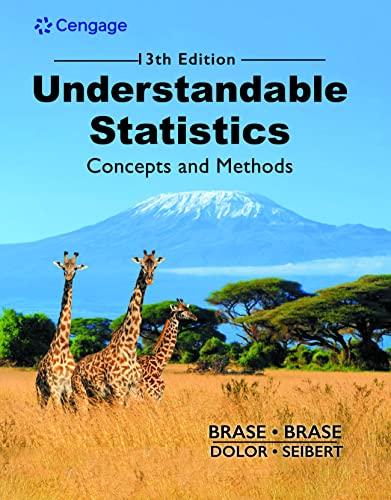Botany: Iris The following data represent petal lengths (in cm) for independent random samples of two species
Question:
Botany: Iris The following data represent petal lengths (in cm) for independent random samples of two species of iris (Reference: E. Anderson, Bulletin American Iris Society). Note: These data are also available for download at the Companion Sites for this text.
Petal length (in cm) of Iris virginica: x1; n1 5 35 5.1 5.8 6.3 6.1 5.1 5.5 5.3 5.5 6.9 5.0 4.9 6.0 4.8 6.1 5.6 5.1 5.6 4.8 5.4 5.1 5.1 5.9 5.2 5.7 5.4 4.5 6.1 5.3 5.5 6.7 5.7 4.9 4.8 5.8 5.1 Petal length (in cm) of Iris setosa: x2; n2 5 38 1.5 1.7 1.4 1.5 1.5 1.6 1.4 1.1 1.2 1.4 1.7 1.0 1.7 1.9 1.6 1.4 1.5 1.4 1.2 1.3 1.5 1.3 1.6 1.9 1.4 1.6 1.5 1.4 1.6 1.2 1.9 1.5 1.6 1.4 1.3 1.7 1.5 1.7
(a) Use a calculator with mean and standard deviation keys to verify that x1 < 5.48, s1 < 0.55, x2 < 1.49, and s2 < 0.21.
(b) Let m1 be the population mean for x1 and let m2 be the population mean for x2. Find a 99% confidence interval for m1 2m2.
(c) Interpretation Explain what the confidence interval means in the context of this problem. Does the interval consist of numbers that are all positive?
all negative? of different signs? At the 99% level of confidence, is the population mean petal length of Iris virginica longer than that of Iris setosa?
(d) Check Requirements Which distribution (standard normal or Student’s t) did you use?
Why? Do you need information about the petal length distributions? Explain.AppendixLO1
Step by Step Answer:

Understandable Statistics Concepts And Methods
ISBN: 9780357719176
13th Edition
Authors: Charles Henry Brase, Corrinne Pellillo Brase





